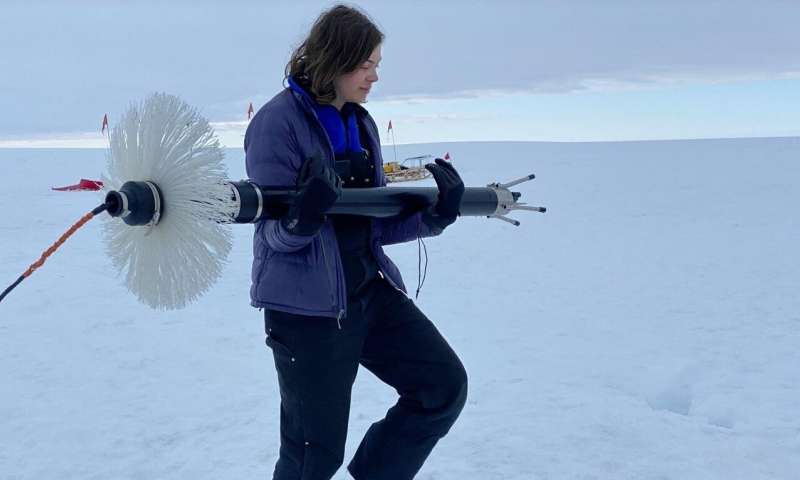
Climate change is melting Antarctic ice at an unprecedented rate. Warmer seawater is said to be flowing under the glacier, holding the fate of millions of people living in coastal regions around the world. This may lead to fatal consequences.
The vast Thwaites Glacier slides from the Antarctic ice sheet into the Amundsen Sea. If this fragile glacier collapses, there is a possibility that a cascade will occur and sea level rises by 3m. It is for this reason that this glacier is called the doomsday glacier. Researchers have been aware that glaciers have been unstable for decades, but recent studies are the first to see warm water flowing in critical areas beneath the glacier.
The research team, made up of 100 members from the United States and the United Kingdom, conducted a large-scale survey for the first time on the Suwaites Glacier in December last year. The team scattered across the glacier carried out various tasks, including photographing the bottom of the glacier. The team drilled a 610m hole that reached the icy waters and sent down equipment that could measure seawater and ocean turbulence. As a result, it is said that the freezing temperature of seawater recorded 0 degrees, which exceeded 2 degrees.
Unfortunately, because the terrain under the ice is downhill towards the sea, it is easy to melt the ice by the seawater flowing under the popped ice. Moreover, the current mixes warm seawater with melted fresh water from glaciers, and warm water flows toward the continents, causing the ice to melt faster.
David Holland, a New York University glaciologist who conducted the study, said the findings were happening, saying that the unstoppable glacier retreat could have a major impact on global sea level rise.
Sea level rise doesn’t just affect where glaciers melt. Places in coastal areas around the world can be water-fighting. At 192,000 km 2 the size of Florida, the Suwaites Glacier contributed 4% to sea level rise so far. When the Suwaites Glacier collapses, the ice that causes a 90cm sea level rise flows into the sea.
However, the Pine Island Glacier, which is located on the same West Antarctic ice sheet, is said to have the land going downhill toward the sea like the Swaits Glacier, so warm seawater will flow under the splashed ice. If both are melted, an absurd amount of ice flows into the sea, raising the sea level to 3m, and many coastal cities sink into the sea.
It is not clear how fast the Suwaites Glacier will melt. But it is clear that the climate crisis is accelerating. It is a threat to all places in the world. The melting of the West Antarctic glaciers does not mean that sea levels rise suddenly. It rises over time, from hundreds to thousands of years. That doesn’t mean you’re safe. Humanity, who has created the cause of warming, must do its best to zero carbon dioxide emissions as soon as possible. Related information can be found here .


